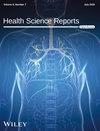Comprehensive Assessment of Genital Infections and Reproductive Health in Women Visiting a Fertility Clinic in Warangal, India—A Case-Control Study
Abstract
Background
Female infertility is a global health issue however, its link with genital infections is often overlooked due to asymptomatic nature of infections. Delayed diagnosis and treatment due to absence of reliable point-of-care (POC) tools result in long-term pathological consequences and infertility. This pilot-scale study aims to identify the most noteworthy prognostic symptoms of genital infections that exhibit a significant correlation with reproductive tract disorders and infertility.
Methods
We designed a detailed questionnaire and conducted a case-control, observational study with 100 female patients, categorized into infertile (n1 = 62) and healthy groups (n2 = 38) followed by statistical analysis.
Results
This study highlights an early onset of infertility (18-25 years). Approximately 27% of the infertile female patients are symptomatic for genital infections, and ~42% exhibit menstrual irregularities. Polycystic ovarian syndrome/disease (PCOS/PCOD, ~30%) appears to be the most predominant disorder, followed by endometrial disorders (~10%) and tubal damage (~8%) in infertile patients. A multivariate correlation analysis revealed a highly significant (p ≤ 0.05) and strong association (0.15 < Φ ≤ 1.0) between menstrual disorders, endometrial disorders, uterine/tubal blockage, and hormonal disruption with infection-associated symptoms, e.g. vaginitis, cervicitis, pelvic inflammatory disorder (PID), dyspareunia or infections like tuberculosis (TB) & urinary tract infection (UTI).
Conclusions
Our study shows a significant contribution of genital infections to female infertility. Nevertheless, a substantial 73% of infertile patients are ineligible for confirmatory diagnosis due to the absence of classical infection symptoms. This underscores the pressing requirement for comprehensive screening strategies for timely management of reproductive health and fertility.
Patient or Public Contribution
This study was performed in line with the principles of the STrengthening the Reporting of OBservational studies in Epidemiology (STROBE) guidelines (Supporting Information 1) [1]. The study was performed following an ethical approval of the Institutional Human Ethics Committee. All individuals who participated in the study were fully informed about various aspects, including the study's objectives, methodologies, sources of funding, potential conflicts of interest, institutional affiliations of the researcher, anticipated benefits, potential risks, and the discomfort they might experience. Their participation was contingent on obtaining their informed consent (See Supporting Information 2 for patient consent form). Furthermore, to safeguard patient confidentiality, we took measures to de-identify patient information. This included the removal of exact ages, which were replaced with age ranges, and the omission of exact dates or photographs during presentation of the data.


 求助内容:
求助内容: 应助结果提醒方式:
应助结果提醒方式:


